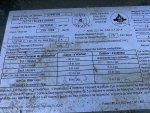- Jul 18, 2018
- 194
- Pool Size
- 23000
- Surface
- Vinyl
- Chlorine
- Salt Water Generator
- SWG Type
- Hayward Aqua Rite (T-15)
I posted this in the everything else thread, but didn't get a response. Figured all of the chemical experts hang out here. My CH has been consistent in the 100-125 range for 2 years now. (Sometimes I get 4 drops until the color change, sometimes 5). I am having heater issues and I dug up my heater manual (Hayward 200,000 BTU 3 years old) and it said I should maintain my CH at a minimum of 200, or the I risk corrosion to the Heat Exchanger. Also it says to maintain chlorine in the 1-3 ppm range. So I know they are wrong there and I figure they are just repeating industry standards. Should I increase my CH and worry about this? Everything I have learned on this site says not to worry about CH for a vinyl pool. Thanks!


